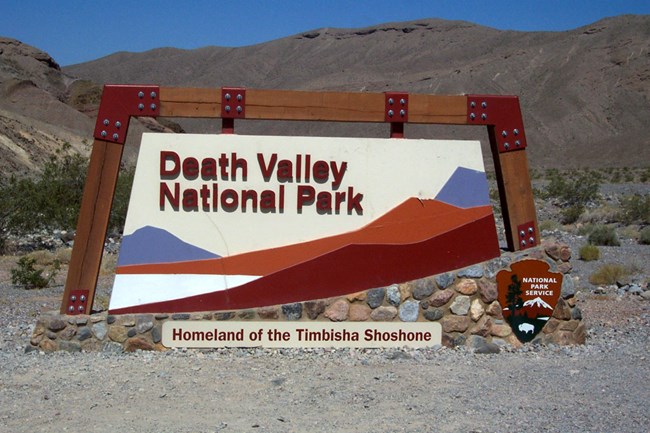Traveling by CarMost visitors to Death Valley National Park explore the park by private vehicle or as part of a permitted tour group. There is no public transportation to or within the park. There is no cell phone service along most park roads. Help may be many hours away; travel prepared to self-rescue. There are three gas stations in the park:
Electric vehicles (EV): There are no rapid chargers inside the park. The closest rapid chargers are in Beatty, Nevada, 43 miles from Furnace Creek. It is unwise to expect to be able to use these to charge during peak visitation times when many other EV-drivers may be in the park (such as holidays in fall, winter, and spring). Furnace Creek:As of December 2023, the two chargers at The Inn at Death Valley are not working and two of the 4 chargers at The Ranch at Death Valley are working and have adapters, instructions available at the front desk.
Stovepipe Wells:Four chargers are located at Stovepipe Wells adjacent to the General Store.

NPS Photo Paved Entrances
Dirt Road EntrancesMany dirt roads enter the park. Popular entrances include: Wildrose Canyon Road, Harry Wade Road, Titus Canyon Road, Death Valley/Big Pine Road, and Saline Valley Road. See the Death Valley Backcountry and Wilderness Access Map for a list of roads and general road conditions. 
NPS/Kurt Moses Using GPS NavigationDO NOT DEPEND ONLY ON YOUR VEHICLE GPS NAVIGATION SYSTEM. Map coordinates for Furnace Creek Visitor Center are: N 36°27.70, W 116°52.00 By Private Plane
Traveling SafelyMany of Death Valley's roads were built in the 1930s. They are narrow and serpentine and cannot be driven at high speed. The most dangerous thing in Death Valley is not the heat - it is the single car rollover. Plan AheadCell phones do not work in most areas of Death Valley National Park and wifi is only available for purchase at the Furnace Creek Ranch (Hotel). Backcountry TravelTravel on the park's hundreds of miles of backcountry roads requires the correct type of vehicle for the road conditions, tools and replacement parts for your vehicle, and experience driving on rough dirt, gravel and 4-wheel drive roads. Backcountry travel in the summer months (April through mid-October), can be dangerous and requires additional water and supplies and knowledge of how to survive if your vehicle becomes disabled in desert summer conditions!
| ||||||||||||||||||||||||
Last updated: January 24, 2025
